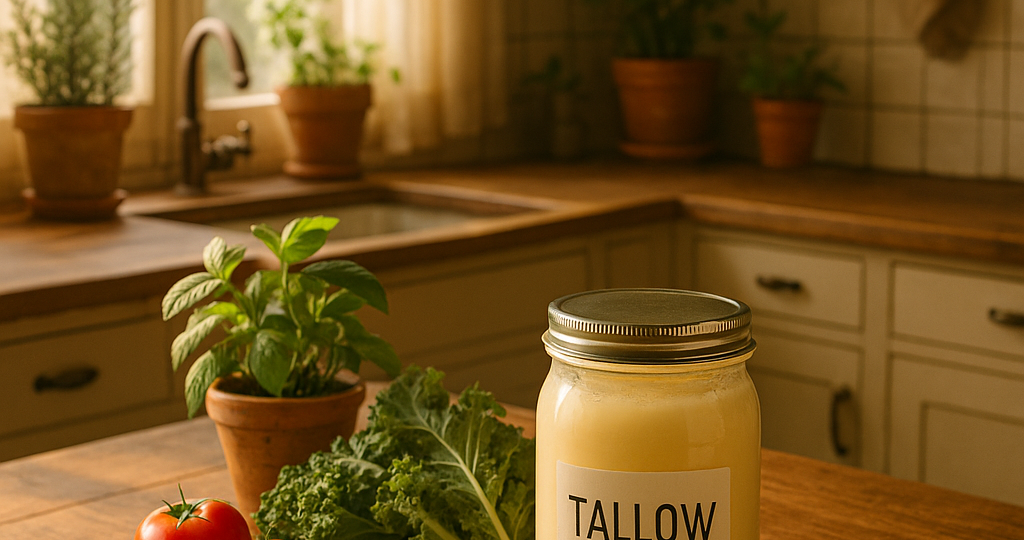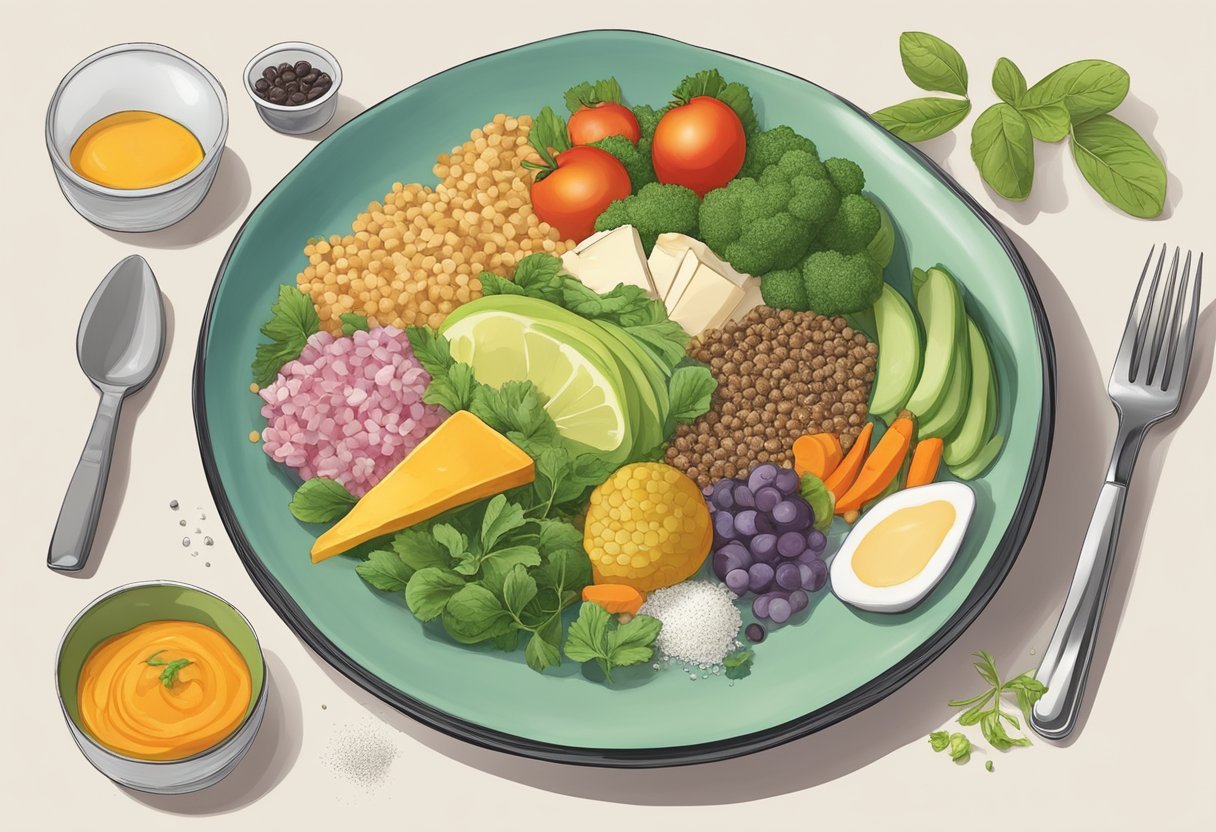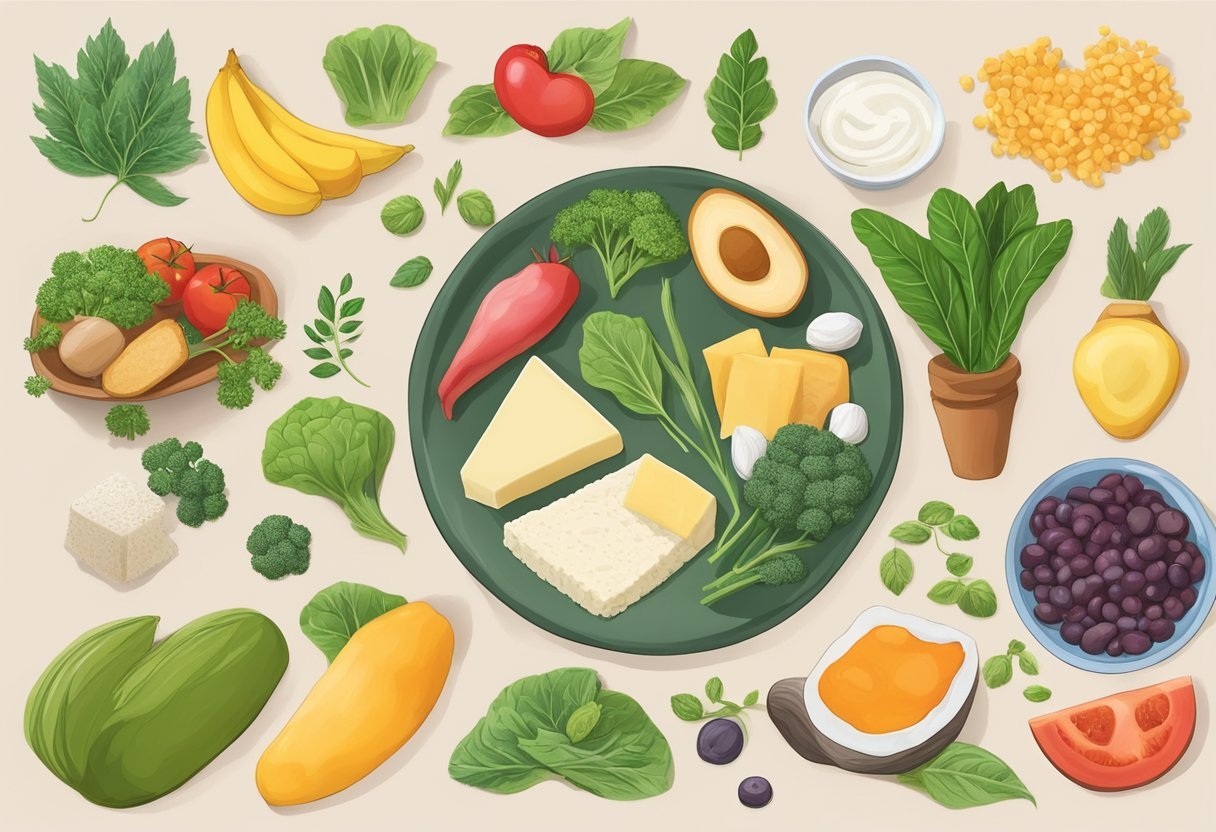Can Tallow Be Part of a Plant-Based Diet? Nutritional Benefits and Ethical Considerations
April 28, 2025 | by iprittie@gmail.com

Many people wonder if animal fats like tallow can fit into a plant-based eating style. This question creates interesting discussions about what it means to eat mostly plants.
Whether tallow can be integrated into a plant-based diet depends on your personal definition and goals. For many following plant-forward eating or flexitarian fat choices, adding a small amount of animal fat like tallow can offer key nutrients without compromising the spirit of a plant-rich lifestyle.

Tallow, a rendered fat made from beef or mutton, contains nutrients not easily found in plant foods alone. Some ex-vegans report benefits from including it in their diets, particularly in terms of B vitamins and iron. However, those following plant-based diets for ethical reasons often avoid animal fats completely.
Key Takeaways
- Plant-based diets exist on a spectrum, with flexibility for some to include minimal animal products like tallow while strict vegans avoid them entirely.
- Tallow provides nutrients that may complement plant-based diets, including fat-soluble vitamins and specific fatty acids not abundant in plant sources.
- The decision to include tallow should align with your personal health goals, ethical considerations, and environmental values rather than rigid dietary labels.
Understanding Tallow

Beef tallow is a rendered fat with unique properties and composition that sets it apart from plant-based alternatives. It has historical significance in cooking and contains specific nutrients that have both supporters and critics in the nutrition world.
Curious how traditional fats like tallow are making a comeback in modern snacking? Discover the story behind Rosie’s Chips and their revival of authentic, tallow-cooked potato chips.
Origins and Composition of Beef Tallow
Beef tallow is a solid fat derived from cattle, traditionally obtained through a rendering process that melts and purifies fat from around the kidneys and loins. This historical cooking fat was widely used before vegetable oils became popular in the 20th century.
The composition of tallow is primarily saturated fat (approximately 50%) with the remainder being monounsaturated and small amounts of polyunsaturated fats. This high saturated fat content makes it solid at room temperature.
Nutritionally, tallow contains fat-soluble vitamins including A, D, E, and K. Grass-fed beef tallow has notably higher levels of these nutrients compared to grain-fed sources.
Tallow also contains conjugated linoleic acid (CLA), a fatty acid that some research suggests may have anti-inflammatory properties. This composition gives tallow a high smoke point (400°F/205°C), making it stable for high-heat cooking.
Animal Fat vs Plant Oil Digestion: Nutritional and Cooking Differences
When comparing tallow to plant-based alternatives, several key differences emerge. Plant oils generally contain more unsaturated fats, while tallow is higher in saturated fats. This structural difference affects how each performs in cooking and impacts nutritional profiles.
Plant-based oils offer additional benefits like antioxidants and essential fatty acids not found in tallow. Olive oil, for example, contains polyphenols with anti-inflammatory properties, while flaxseed oil provides omega-3 fatty acids.
For cooking purposes, tallow’s high smoke point makes it excellent for high-heat applications, while many plant oils break down at lower temperatures. This stability under heat prevents the formation of harmful compounds during cooking.
From a biocompatibility perspective, both tallow and certain plant oils have properties that can be beneficial for skin applications, though they work through different mechanisms.
Nutritional Implications of Integrating Tallow

Adding beef tallow to a plant-based diet introduces both benefits and considerations for nutritional intake. The unique fatty acid profile and vitamin content of tallow can complement plant-based nutrition in specific ways.
Wondering about the real connection between tallow and cardiovascular health? Dive deeper into how tallow impacts heart health based on modern nutritional research.
Saturated Fats and Their Effects
Beef tallow contains significant amounts of saturated fat, with approximately half of its fat content being saturated. Unlike many plant oils, tallow resists oxidation and damage when heated, making it stable for cooking.
Saturated fats have been traditionally associated with increased cholesterol levels. However, recent nutritional science has become more nuanced on this topic. Some research suggests that certain saturated fats may not impact heart health as negatively as once thought.
For those managing diabetes, tallow may offer benefits through its satiating properties. Tallow can increase satiety and reduce overall calorie intake by helping people feel fuller longer.
When integrating tallow into plant-based diets, moderation remains key. The American Heart Association still recommends limiting saturated fat intake for heart health.
Vitamin Content in Tallow
Beef tallow contains several fat-soluble vitamins that can be valuable additions to plant-based diets. It provides vitamins that support immune function and bone health.
Key vitamins in tallow include:
- Vitamin A: Supports vision and immune function
- Vitamin D: Essential for calcium absorption and bone health
- Vitamin E: Acts as an antioxidant
- Vitamin K: Important for blood clotting and bone metabolism
Plant-based diets sometimes lack these fat-soluble vitamins in their most bioavailable forms. Tallow can help bridge these nutritional gaps. Tallow may help address nutrient gaps in plant-based diets by providing bioavailable forms of fat-soluble vitamins that are otherwise limited or poorly absorbed from plant sources.
It’s worth noting that tallow lacks some beneficial compounds found in plant oils. Plant oils often contain antioxidants and essential fatty acids not present in animal fats.
Tallow in Diet and Heart Health

Beef tallow’s impact on cardiovascular health depends largely on consumption patterns and individual health factors. Understanding how animal fats affect cholesterol levels can help people make informed dietary choices.
Impact on Cholesterol Levels
Beef tallow contains approximately 50% saturated fat, which has been linked to increased LDL (“bad”) cholesterol levels. Higher LDL cholesterol raises the risk of heart disease. This connection has led many health professionals to caution against regular tallow consumption.
Studies show that saturated fats from animal sources can have inflammatory properties that may contribute to cardiovascular issues. For this reason, nutritionists often recommend that people with heart disease or high cholesterol limit tallow intake.
Plant-based fats typically offer better cardiovascular benefits. Research indicates that substituting animal fats with plant oils can improve heart health markers and reduce inflammation.
Tallow in Moderation
Despite concerns, some experts suggest that limited tallow consumption might be acceptable for certain individuals. High-quality beef tallow used occasionally may offer benefits when incorporated thoughtfully into an otherwise balanced diet.
Context matters significantly. A diet rich in vegetables, fruits, whole grains, and heart-healthy fats can potentially offset occasional tallow use. The overall dietary pattern remains more important than any single ingredient.
Portion control is essential when incorporating animal fats like tallow into predominantly plant-based diets. Can tallow be used in vegetarian recipes? Yes — while not vegan, small amounts of tallow can be incorporated into vegetarian recipes like stews or sautéed vegetables, especially in flexitarian diets. It adds depth of flavor and essential fat-soluble vitamins.
Addressing the Inflammation Concern

Many people worry about inflammation when considering animal fats in their diet. Research on the relationship between tallow and inflammation shows mixed results that depend on several factors including sourcing and consumption patterns.
Saturated Fat and Inflammation
Tallow contains significant amounts of saturated fat, which has been linked to increased inflammation in some studies. A standard tablespoon of beef tallow contains approximately 6 grams of saturated fat. This connection has led many health professionals to recommend plant-based diets to manage chronic inflammation.
However, not all saturated fats affect the body the same way. The fatty acid composition of tallow differs from other saturated fats like those found in processed foods.
Quality matters significantly. Tallow from grass-fed animals typically contains fewer pro-inflammatory compounds compared to conventionally raised animals. Because of its stable structure and nutrient content, tallow is gaining attention as one of the few anti-inflammatory cooking fats suitable for high-heat applications.
Moderation remains key. Small amounts of tallow incorporated into a diet rich in anti-inflammatory plant foods may not significantly impact overall inflammation levels.
Anti-Inflammatory Effects of CLA
Conjugated Linoleic Acid (CLA) is a naturally occurring fatty acid found in tallow, particularly from grass-fed animals. Research suggests CLA may have anti-inflammatory properties that could potentially offset some concerns.
Studies have shown that CLA can help reduce inflammatory markers in the body, including C-reactive protein and certain interleukins. This makes it unique among animal fats.
The CLA content in tallow varies based on the animal’s diet. Grass-fed beef tallow typically contains 2-3 times more CLA than conventionally raised animals.
Some research examining plant-based diets acknowledges these nuances in animal fats, noting that not all animal-derived substances uniformly promote inflammation.
Portion control remains essential. The potential anti-inflammatory benefits of CLA appear at moderate consumption levels, not with high intake of tallow.
Culinary Uses of Tallow in Plant-Based Diets
Tallow offers unique cooking properties that can complement plant-based dishes despite its animal origin. Its high smoke point and distinct flavor profile make it versatile for various cooking applications.
Tallow’s Role in Frying and Cooking
Beef tallow excels in high-heat cooking applications, making it ideal for frying vegetables and plant-based proteins. With a smoke point around 400°F (204°C), it creates a crispy exterior while maintaining moisture inside foods.
Several restaurants are switching from vegetable oils to beef tallow for frying, citing both flavor benefits and cooking performance. The stable molecular structure prevents oxidation during high-heat cooking.
Tallow imparts a rich, savory flavor that enhances roasted vegetables, particularly root vegetables like potatoes, carrots, and parsnips. It’s excellent for sautéing mushrooms, giving them a meaty depth without animal protein.
Unlike some plant oils, tallow performs exceptionally well in long-cooking applications, making it suitable for slow-roasted vegetable dishes.
Incorporating Tallow into Vegetarian Recipes
Small amounts of tallow can be incorporated into vegetarian (not vegan) dishes as a flavor enhancer. A teaspoon added to bean stews or vegetable soups provides depth without overwhelming plant flavors.
For baking, tallow can replace butter or shortening in pie crusts and biscuits, creating flaky textures while adding subtle richness. The ratio for substitution is typically 1:1.
Pre-seasoned cast iron maintenance benefits from light tallow applications, imparting non-stick properties that improve vegetable cooking results over time.
Some flexitarians use what they call the “condiment approach” – using minimal amounts of tallow (1-2 teaspoons) to enhance primarily plant-based meals rather than as a main cooking fat.
While tallow lacks the antioxidants found in plant-based oils, it can be combined with herbs and spices to create infused cooking fats that complement vegetable dishes.
Tallow in the Context of Dietary Patterns
Understanding how animal fats like tallow fit into modern dietary patterns requires examining both historical food uses and current nutritional trends. This includes comparing tallow with alternatives found in common food environments.
Comparing Tallow with Fast Food Usage
Beef tallow was once a staple in fast food cooking, particularly for frying. McDonald’s famously used beef tallow for french fries until the early 1990s when concerns about saturated fat prompted a switch to vegetable oils.
Despite its removal from most commercial settings, some restaurants have reintroduced tallow for its flavor profile. Tallow contains approximately 50% saturated fat, which creates a distinct taste that many vegetable oils cannot replicate.
From a nutritional standpoint, tallow in fast food presents a complex picture. While high in saturated fat, it lacks the trans fats often found in hydrogenated vegetable oils that replaced it. However, experts still caution about potential health risks associated with high saturated fat consumption.
Assessing the Popularity of Seed Oils
Seed oils have largely replaced animal fats like tallow in both commercial food production and home cooking. Common examples include:
- Canola oil
- Soybean oil
- Sunflower oil
- Safflower oil
- Corn oil
These oils gained popularity for several reasons. They contain higher levels of unsaturated fats, which align with dietary recommendations that emphasize plant-derived foods for health benefits.
Recent research suggests diets rich in vegetable fats may positively influence gut microbiota. Additionally, seed oils are generally more affordable and have neutral flavors that make them versatile for cooking.
However, some nutritionists have raised concerns about processing methods and omega-6 to omega-3 fatty acid ratios in highly refined seed oils, leading some consumers to reconsider traditional fats like tallow.
Health Benefits Beyond Nutrition
Tallow offers valuable benefits that extend well beyond its nutritional properties. These natural animal fats provide solutions for skin health and possess therapeutic qualities that have been utilized across generations.
Tallow in Skincare
Tallow contains a fatty acid profile remarkably similar to human skin, making it highly compatible with our skin’s biology. This natural fat is rich in vitamins A, D, E, and K, which help nourish and protect the skin barrier.
Many people with sensitive skin conditions like eczema and psoriasis report improvement when using tallow-based products. Unlike petroleum-based moisturizers, tallow penetrates deeply into skin layers rather than just sitting on top.
The anti-inflammatory properties of tallow can help reduce redness and irritation. It doesn’t clog pores despite being a fat, making it suitable for various skin types.
Tallow-based balms and creams are becoming increasingly popular in natural skincare routines, offering a simple yet effective alternative to commercial products with lengthy ingredient lists.
Therapeutic Uses of Tallow
Beyond skincare, tallow offers therapeutic applications that complement plant-based wellness practices. Traditional cultures have used tallow remedies for generations to treat minor wounds, burns, and rashes due to its natural healing properties.
The fat-soluble vitamins in tallow help reduce inflammation throughout the body when applied topically. This makes tallow balms effective for joint pain and muscle soreness when used as a massage medium.
Aromatherapy enthusiasts often use tallow as a base for essential oil blends. The fat helps dilute potent oils while improving skin absorption and extending the fragrance life.
Those seeking to mitigate inflammation may benefit from therapeutic tallow applications. The stable saturated fats resist oxidation, making tallow products shelf-stable without artificial preservatives.
Tallow can be integrated into self-care routines alongside plant-based practices, creating a holistic approach to wellness that draws from both animal and plant kingdoms.
Debunking Myths Around Tallow
Many misconceptions surround tallow in the food world, particularly when considering its role in plant-based diets. These myths often stem from outdated information or confusion about what tallow actually contains.
Addressing Tallow’s Misconceptions
One common myth is that tallow is not compatible with vegetarian diets because it comes from animal fat. While strict vegans avoid all animal products, some flexitarians might consider tallow in small amounts.
Another misconception involves tallow’s fat content. Many believe it’s unhealthier than plant oils, but tallow contains beneficial fatty acids including omega-3s and conjugated linoleic acid.
Tallow’s smoke point is often misunderstood. It actually has a high smoke point (400°F), making it stable for cooking at high temperatures—sometimes more stable than some plant-based alternatives.
The idea that tallow always tastes strongly “beefy” is also misleading. Properly rendered tallow has a mild flavor that won’t overpower dishes, unlike what many forum discussions on Yahoo and other platforms might suggest.
Scientific Evidence vs. Popular Beliefs
Scientific research challenges many popular beliefs about tallow. Studies show that saturated fats from natural sources like tallow don’t deserve the negative reputation they’ve acquired in past decades.
Research indicates that tallow contains vitamin D, vitamin E, and vitamin K—nutrients that support immune function and bone health. These benefits are rarely mentioned in mainstream discussions.
The sustainability argument also deserves attention. Tallow is a byproduct of the meat industry that would otherwise be wasted. Using it represents a form of nose-to-tail consumption that reduces waste.
Tallow’s skin benefits are sometimes overstated, however. While it does help lock in moisture, it lacks some of the antioxidants and essential fatty acids found in plant-based alternatives.
Research is ongoing, but current evidence suggests tallow can be part of a balanced diet when used appropriately, contrary to what many popular beliefs suggest.
Environmental and Ethical Considerations
The use of tallow in plant-based diets raises important questions about sustainability and moral implications. Consumers increasingly weigh these factors when making dietary choices.
Sustainability of Tallow Production
Beef tallow is a byproduct of meat production, which means its environmental footprint is directly linked to cattle farming. Cattle production requires significant land, water, and feed resources while generating methane emissions that contribute to climate change.
However, using tallow that would otherwise be discarded can be viewed as reducing waste. When animals are already being processed for meat, utilizing all parts—including fat for tallow—maximizes resource efficiency.
The carbon footprint of tallow is generally lower than that of many plant oils when considered as a byproduct rather than a primary product. This is because the environmental impacts are primarily attributed to the meat production process.
Food miles should also be considered. Local tallow may have lower transportation emissions than imported plant oils.
Ethical Dimensions of Using Animal Fats
The ethical considerations of incorporating tallow into plant-based diets are complex and often personal. Many individuals choose plant-based diets for ethical reasons related to animal welfare and rights.
For strict vegetarians and vegans, tallow is unacceptable as it comes from animals. Their ethical stance typically prohibits all animal products regardless of whether the animal was already being processed for meat.
Some flexitarians or plant-forward eaters might find using tallow ethically acceptable if it comes from animals raised humanely or if it represents a waste-reduction strategy.
Cultural and religious factors also influence ethical perspectives. Some traditions have specific guidelines about animal fats, while others may emphasize practical considerations over absolute rules.
Personal health goals and environmental priorities create additional layers in this ethical decision-making process.
Finding a Balance: Tallow in a Plant-Based Lifestyle
The concept of adding beef tallow to a plant-based diet might seem contradictory at first. Plant-based diets typically focus on fruits, vegetables, whole grains, and plant proteins while minimizing animal products.
However, some people follow plant-forward rather than strictly vegan diets. These individuals primarily eat plants but occasionally include small amounts of animal products.
Beef tallow contains saturated fat, which health organizations recommend limiting. For those who choose to include it, moderation is key.
Here are ways to balance tallow in a predominantly plant-based diet:
- Occasional use: Reserve tallow for special recipes rather than daily cooking
- Small amounts: Use minimal quantities for flavor rather than as a main ingredient
- Quality matters: Choose grass-fed, organic sources when possible
- Balance: Ensure the majority (90%+) of fats come from plant sources
Plant-based diets offer numerous health benefits including ease of digestion and balanced nutrition. Adding small amounts of tallow doesn’t necessarily negate these benefits.
For those transitioning to a vegan diet, tallow might serve as a stepping stone. They can gradually reduce its use while increasing plant-based alternatives.
The decision to include tallow remains personal. Some find it helps with satisfaction and flavor while maintaining a diet that’s still predominantly plant-based.
RELATED POSTS
View all



